Naval Aviation of the Russian Navy: Current State and Prospects
As you know, for a number of different reasons the USSR in the construction of the naval fleet He didn’t bet on aircraft carriers, on deck aircraft. However, this does not mean that in our country they did not understand the importance of naval aviation in general - on the contrary! In the 80s of the last century, it was believed that this kind of force is one of the most important components of the navy. Navy aviation (more precisely, the Air Force of the Navy of the USSR, but for the sake of brevity, we will use the term "naval aviation" regardless of how it was specifically called in a particular historical period) was entrusted with many important tasks, in including:
1. Search and destroy:
- enemy missile and multipurpose submarines;
- surface connections of the enemy, including carrier strike groups, amphibious landings, convoys, naval strike and anti-submarine groups, as well as single warships;
- transports, aircraft and cruise missiles of the enemy;
2. Ensuring the deployment and actions of its fleet forces, including in the form of air defense of ships and fleet objects;
3. Conducting aerial reconnaissance, guidance and issuance of target designations to other branches of the Navy;
4. Destruction and suppression of objects of the air defense system in the flight lanes of their aircraft, in the areas of problem solving;
5. Destruction of naval base, ports and destruction of ships and transports in them;
6. Ensuring the landing of amphibious assault forces, reconnaissance and sabotage groups and other assistance to ground forces in coastal directions;
7. The setting of minefields, as well as mine action;
8. Conducting radiation and chemical intelligence;
9. Rescue crews in distress;
10. The implementation of air transport.
To this end, the following types of aviation were part of the USSR naval aviation:
1. Maritime Missile Aviation (MRA);
2. Anti-submarine aircraft (PLA);
3. Assault aircraft (ShA);
4. Fighter aircraft (AI);
5. Reconnaissance Aviation (RA).
And besides - also special-purpose aircraft, including transport, electronic warfare, anti-mine, search and rescue, communications, etc.
The number of naval aviation of the USSR was impressive in the best sense of the word: just by the beginning of the 90-s of the twentieth century, it included the 52 air regiment and 10 of individual squadrons and groups. They consisted of 1991 1 702 aircraft, including 372 bomber, equipped with cruise anti-ship missiles (Tu-16, Tu-22М2 and Tu-22М3), tactical aircraft of the planes (Su-966), and I-yan, I, I, I, I, and I, I, I, I, I, I, I, I, I, made all of the planes of tactical aviation (I, I, I, I, I, I, I, I, I, I, I, I). , MiG-24, MiG-38 and other types of fighters), as well as 17 aircraft of other classes and 27 helicopters, and all - 23 364 aircraft and helicopters. At the same time, the basis of the strike power of naval aviation was sea missile divisions: their number is unknown to the author as of 455 g, but there were five such divisions in 2 g, which included 157 air regiments.
Well, then the Soviet Union was destroyed and its armed forces were divided between numerous "independent" republics, at once received state status. It must be said that naval aviation withdrew to the Russian Federation almost at full strength, but the Russian Federation could not contain such numerous forces. And now, by the middle of 1996, its composition was reduced by more than three times - to 695 aircraft, including 66 missile carriers, 116 anti-submarine aircraft, 118 fighters and attack aircraft, and 365 helicopters and special aircraft. And that was just the beginning. By 2008, maritime aviation continued to decline: unfortunately, we do not have exact data on its composition, but there were:
1. Sea-launched missile aviation - one regiment equipped with Tu-22М3 (as a part of the Northern Fleet). In addition, there was another mixed air regiment (568, on the Pacific Fleet), in which, along with two squadrons of Tu-22М3, there were also Tu-142МР and Tu-142М3;
2. Fighter aircraft - three air regiments, including the 279 airfield, designed to operate from the deck of the only Russian TAVKR "Admiral of the Fleet of the Soviet Union Kuznetsov." Naturally, the 279 military base was based on the SF, and the other two regiments belonged to the Baltic Fleet and the Pacific Fleet, armed with the Su-27 and MiG-31 fighters, respectively;
3. Attack aircraft - two regiments deployed in the Black Sea Fleet and BF, respectively, and armed with the Su-24 and Su-24Р aircraft;
4. Anti-submarine aircraft - everything is somewhat more complicated. We divide it into ground-based and ship-based aircraft:
- the main land antisubmarine aircraft are the 289 th separate mixed anti-submarine aviation regiment (IL-38, Ka-27, Ka-29 and Ka-8) helicopters and 73-I separate antisubmarine air squadron (Tu-142). But besides them, the anti-submarine aircraft IL-38 are in service (along with other aircraft) of three more mixed air regiments, and in one of them (917-y, BSF) there are also amphibious aircraft Be-12;
- ship-based anti-submarine aviation includes two naval anti-submarine regiments, and one separate squadron equipped with Ka-27 and Ka-29 helicopters;
5. Three mixed air regiments, in which, along with the IL-38 and Be-12 mentioned earlier, there are also a large number of transport and other non-combat aircraft and helicopters (An-12, An-24, An-26, Tu-134, Mi-8 helicopters ). Apparently, the only tactical rationale for their existence was that the aircraft that had survived the next round of “reforms” was reduced to a single organizational structure;
6. Transport Aviation - two separate transport aviation squadrons (An-2, An-12, An-24, An-26, An-140-100, Tu-134, IL-18, Il18-36, etc.)
7. A separate helicopter squadron - Mi-8 and Mi-24.
All in all, 13 air regiments and 5 individual air squadrons. Unfortunately, there are no precise data on the number of aircraft as of 2008, and it is difficult to derive them “empirically”. The fact is that the numerical composition of naval aviation connections “floats” to a certain extent: in 2008, the aviation division no longer comprised naval aviation, but during Soviet times the aviation division could consist of two or three regiments. In turn, the air regiment usually consists of 3 squadrons, but exceptions are possible here. In turn, the air squadron consists of several air links, and the air line can include an 3 or 4 aircraft or a helicopter. On average, an air squadron can count 9-12 airplanes, an aviation regiment - 28-32 aircraft, an air division - 70-110 aircraft.
Taking the numbers of the air regiment in 30 airplanes (helicopters) and the air squadron 12, we get the number of naval aviation of the Russian Navy in 450 airplanes and helicopters as of 2008. There is a feeling that this figure is too high, but even if it is correct, then In this case, it can be stated that the number of naval aviation decreased in comparison with 1996 more than one and a half times.
Someone might decide that this is the very bottom, from where only one way - up. Alas, this was not the case: in the framework of reforming the armed forces, it was decided to transfer naval missile-carrying, assault and fighter aircraft (except deck) to military air forces, and later military space forces. Thus, the fleet lost almost all of its missile carriers, fighters and attack aircraft, with the exception of the deck air regiment flying then on the Su-33, and the Black Sea assault air regiment armed with the Su-24. Strictly speaking, the latter could also be transferred to the Air Force, if it were not for the legal nuance - the air regiment was stationed in the Crimea, where, according to the agreement with Ukraine, only the navy could deploy its combat units, but the Air Force was forbidden. Thus, having transferred the air regiment of the VKS, we would have to relocate it from the Crimea somewhere else.
How reasonable was this decision?
In favor of the withdrawal of rocket-carrying and tactical aircraft to the Air Force (the VKS was created in 2015 D) said the plight of the situation in which Russian naval aviation found itself in the first decade of the 21st century. The funds allocated for the maintenance of the fleet were absolutely scanty and in no way matched the needs of the sailors. In essence, it was not about saving, but about the survival of a certain number of forces from their total number, and it is very similar to the fact that the Navy preferred to send funds to preserve the holy of holies - missile submarine forces of strategic purpose, and besides - to preserve in a state of combat capability of a certain number of surface and submarine ships. And it is very similar to the fact that naval aviation simply did not fit into that beggarly budget, which the fleet had to settle for - judging by some evidence, the situation was even worse there than in the domestic Air Force (although it would seem to be worse) . In this case, the transfer of part of the naval aviation of the Air Force seemed to make sense, because there it was possible to completely support the drained air forces of the fleet, and in the fleet they did not expect anything but a quiet death.
We said earlier that in 2008 r, naval aviation probably consisted of 450 airplanes and helicopters, and this seems to be an impressive force. But, apparently, for the most part it existed only on paper: for example, the 689 th Guards Fighter Aviation Regiment, formerly part of the Baltic Fleet, quickly "shrunk" to the size of a squadron (the regiment itself ceased to exist, now they are thinking of reviving it Well, God forbid, in good time ...). According to some information, only two combat-ready squadrons of the Tu-22М3 were completed from the materiel of the regiment and two squadrons of naval missile-bearing aviation of the Air Force. Thus, the number of naval aviation formally remained significant, only the combat effectiveness was preserved, apparently, no more than 25-40% of aircraft, and maybe less. Thus, as we have said before, the transfer of missile-carrying and tactical aircraft from the fleet to the Air Force seemed to make sense.
However, the key word here is “like”. The fact is that such a decision could be justified only in the conditions of continuing budget deficit, but the last days came for it. Just in these years, a new era began for the domestic armed forces - the country finally found the means to more or less worthy of their content, at the same time they began to implement the ambitious state armaments program of the 2011-2020. Thus, the armed forces of the country should have been rescued, and along with them - and naval aviation, and it became simply not necessary to withdraw it from the fleet.
On the other hand, as we remember, there was a time of many changes, including organizational ones: for example, four military districts were formed, and all land forces, the Air Force and the Navy, territorially located in the district, are in command. In theory, this is a great solution, as it greatly simplifies leadership and enhances the coherence of actions of various branches of the armed forces. But what will it be in practice, because in the USSR and in the Russian Federation the training of officers was quite specialized and narrowly focused? After all, in theory, such a combined command will work well only if it is headed by people who perfectly understand the features and nuances of service and military pilots, and sailors, and ground forces, and where to get these, even if we in the Navy there was a division on the "surface" and "underwater" admirals, that is, the officers spent their entire service on submarines or surface ships, but not on those and others in turn? How well can a commander of a district, in the past, for example, an army officer, assign tasks to the same fleet? Provide his combat training?
The author has no answer to these questions.
But back to the unified command. Theoretically, with such an organization, it doesn’t matter where the specific aircraft and pilots are located - as part of the Air Force or the Navy, because any combat tasks, including sea ones, will be solved by all the forces at the disposal of the district. Well, practically ... As we have said above, it is difficult to say how effective such a command would be in our realities, but one thing is certain. History irrefutable evidence that whenever the fleet was deprived of naval aviation, and its tasks were assigned to the Air Force, the latter failed miserably to combat operations, demonstrating the complete inability to fight at least effectively against the sea.
The reason is that combat operations in the sea and ocean are extremely specific and require special combat training: at the same time, the air force has its own tasks and will always consider naval warfare as something that may be important, but still secondary, related to the basic functionality of the air force and will prepare accordingly for such a war. I would like to believe, of course, that in our case it would not be so, but ... perhaps the only lesson in history is that people do not remember its lessons.
Therefore, we can say that the naval aviation of the national fleet in 2011-2012. if not destroyed, it was reduced to the nominal value. What has changed today? There is no information about the number of naval aviation in the open press, but, using various sources, you can try to determine it "by eye".
As is known, missile launcher ceased to exist. However, according to existing plans, the 30 of the Tu-22М3 missile carriers must be upgraded to the Tu-22М3 and be able to use the X-32 anti-ship missile, which is a profound modernization of the X-22.
The new rocket received an upgraded gos capable of operating in the conditions of strong electronic countermeasures of the enemy. How effective will be the new GOS, and how effectively planes that are not in the fleet will be able to use it is a big question, but still we, upon completion of this program, will get a full-fledged rocket-carrying air regiment (at least in terms of numbers). True, today, apart from the “pre-production” aircraft, on which the modernization was “run-in”, there is only one aircraft of this type, which was rolled out on 16 August 2018, and although it is said that all 30 aircraft must be upgraded 2020, such terms cause great doubt.
In addition to the two Tu-22M3M, we also have the 10 MiG-31K converted into carriers of Dagger missiles, but there are too many questions on this weapon system that do not allow us to unequivocally consider this missile an anti-vehicle.
Assault aviation. As we said earlier, in the Russian Navy, the 43 th separate naval ground attack aviation regiment based in the Crimea was preserved. The exact number of Su-24Ms on its armament is not, but given the fact that the first squadron formed in the Crimea, the Su-30CM was included in its composition, and the regiments are usually 3 squadron, it can be assumed that the number of Su-24M and Su- 24МР as part of naval aviation does not exceed 24 units. - that is, the maximum number of two squadrons.
fighter aircraft (multipurpose fighters).
Everything is more or less simple here - after the last reform, only the 279 th oxyap remained in the Navy, which is currently armed with the 17 Su-33 (approximate), besides another air regiment under the MiG-29KR / KUBR - 100 oops. It currently includes the 22 of the aircraft - the 19 MiG-29KR and the 3 MiG-29KUBR. As is known, further delivery of these types of aircraft to the fleet is not planned. However, at present, the Su-30CM is entering service with naval aviation - the author finds it difficult to name the exact number of vehicles in the army (probably within 20 machines), but the total supply of 28 aircraft of this type is expected under current contracts.
That, in general, is all.
Reconnaissance aircraft - everything is simple here. It is not there, with the possible exception of several Su-24MR scouts in the Black Sea 43-omshap.
Anti-submarine aircraft - Its basis today consists of Il-38 in, alas, an unknown quantity. Military Balance claims that as of 2016, there were 54 of them, which more or less coincides with the estimates of the 2014-2015 known to the author. (about 50 machines). The only thing that can be said more or less precisely is that the current program provides for upgrading 38 airplanes to the state of IL-28Н (with the installation of the Novella complex).
It must be said that the IL-38 is already a rather old aircraft (production completed in 1972), and, probably, the remaining machines will be withdrawn from naval aviation for recycling. It is 28 IL-38H that in the near future will form the basis of domestic anti-submarine aviation.
In addition to the IL-38, two squadrons of Tu-142 are also in service with naval aviation, which are usually also listed as anti-submarine aviation. At the same time, the total number of Tu-142 is estimated as “more than 20” by domestic sources and 27 machines, according to Military Balance. However, according to the latter, of this total number of 10 machines are the Tu-142MR, which is an airplane for the relay complex of the standby control system of naval nuclear forces. In order to accommodate the necessary communications equipment, the search and sighting system was removed from the aircraft, and the first cargo bay was occupied with communications equipment and a special towed antenna length 8 600. Obviously, the Tu-142MR cannot perform anti-submarine functions.
Accordingly, in all probability, no more than 17 anti-submarine Tu-142 are included in naval aviation. Considering the fact that the standard strength of the air squadron is 8 airplanes, and we have these squadrons of 2, there is an almost complete correspondence of the number we have determined to the standard organizational structure.
In addition, the anti-submarine aviation includes a number of amphibious aircraft Be-12 - most likely there are 9 machines left, of which 4 are search and rescue (Be-12PS)
Special aircraft. In addition to the already mentioned ten Tu-142MR, naval aviation also has two IL-20PT and IL-22М. They are often recorded in electronic reconnaissance aircraft, but apparently this is erroneous. Yes, the IL-20 is indeed such an aircraft, but the IL-20PT is, in essence, a telemetric flying laboratory for testing missile technology, and the IL-22M is the command point of the Doomsday, that is, the control plane in case of a nuclear war.
Quantity transport and passenger aircraft can not be accurately counted, but probably their total number is about 50 machines.
Helicopters
The radar patrol helicopters - 2 Ka-31;
Anti-submarine helicopters - 20 Mi-14, 43 Ka-27 and 20 Ka-27М, total 83 machines;
Attack and transport-combat helicopters - 8 Mi-24P and 27 Ka-29, total 35 machines;
Search and rescue helicopters - 40 Mi-14PS and 16 Ka-27PS, all - 56 machines.
In addition, it is possible that there is about 17 Mi-8 in the version of transport helicopters (according to other data, they were transferred to other power structures).
All in all, to date, Russian naval aviation has 221 aircraft (of which - 68 special and non-combat) and 193 helicopters (of which - 73 non-combat). What tasks will be able to solve these forces?
Air defense. The Northern Fleet is doing more or less well - it is there that all our 39 Su-33 and MiG-29KR / KUBR are stationed. In addition, this fleet probably received several Su-30CM.
However, attention is drawn to the fact that the typical "budget" air wing of a single American aircraft carrier includes the 48 F / A-18E / F Super Hornet and the possibility of strengthening it with another squadron is provided. Thus, naval tactical aviation of the entire Northern Fleet corresponds at best to one US aircraft carrier, but given the presence of DRLO and EW aircraft in the US air wing, providing much better situational awareness than our aircraft can provide, we should rather speak about American superiority. One aircraft carrier. Out of ten.
As for the other fleets, the Pacific and Baltic fleets today do not have their own fighter aircraft at all, so their anti-aircraft defense completely depends on the airborne forces (as we said earlier, historical experience suggests that the fleet’s hope for the Air Force never justified itself ). The situation with the Black Sea Fleet, which received a squadron of Su-30CM, is slightly better. But then a big question arises - how are they going to use it? Of course, the Su-30CM today, not only a strike aircraft, but also a fighter capable of “recounting spars” to almost any 4 generation fighter - numerous Indian exercises, during which airplanes of this type encountered various foreign “classmates”, led to quite optimistic for us results. However, paraphrasing Henry Ford: "The designers, the glorious guys, created multifunctional fighters, but the genetics, these rashly clever men, did not cope with the selection of multifunctional pilots." The point is that even if you can create a multi-purpose fighter that can equally well fight both air and surface and ground targets, then prepare people who can equally well fight enemy fighters and perform percussion functions, probably , all the same it is impossible.
The specifics of the work of a long-range, fighter or assault pilot are very different. At the same time, the pilot training process itself is very lengthy: in no case should one think that military educational institutions produce pilots who are prepared for modern combat operations. You can say that the flight school is the first stage of training, but then, in order to become a professional, the young soldier has to go a long and difficult path. As the commander of the naval aviation of the Navy, Hero of Russia, Major General Igor Sergeyevich Kozhin, said:
But the “1 Class Pilot” is a high, but not the highest level of preparation, there is also an “pilot-ace” and “pilot-sniper” ... Thus, it is not easy to become a true professional in the chosen type of aviation, this path will require long years of hard work. And yes, no one argues that, having achieved high professionalism, for example, on the MiG-31, the pilot is later able to retrain for Su-24, that is, change the “type of activity”. But this, again, will require great efforts and time, during which the skills of the fighter pilot will gradually be lost.
And yes, it is not necessary to blame the educational institutions at all - alas, in almost no business is a graduate of the university, but is not a professional with a capital letter. Doctors, despite the 6-year study, do not embark on independent practice, but go to an internship where they have been working under the supervision of experienced doctors for another year, while making independent decisions is prohibited for them. And if a young doctor wants to study in depth any direction, a residency awaits him ... Yes, there, the author of this article, being a graduate of an economics institute in the distant past, soon after starting work he heard a completely wonderful phrase in his address: part of the theory will fly out of your head, and practical knowledge will take its place, perhaps you will justify half your salary ”- and this was absolutely true.
Why do we all say this? And the fact that the Black Sea Su-30CM were included in the assault air regiment and, apparently, the fleet is going to use them exactly as strike aircraft. This is confirmed by the words of the representative of the Black Sea Fleet Vyacheslav Trukhachev: "Su-30SM aircraft have proven themselves well and today are the main striking force of naval aviation of the Black Sea Fleet."
Interestingly, the same can be seen in the aviation of other countries. So, as part of the US Air Force, there are F-15C airborne conquest planes and its F-15E twin-seat "version". At the same time, the latter is not at all deprived of fighter qualities, it remains a formidable air fighter, and it can perhaps be considered the closest American equivalent of our Su-30CM. However, F-15E in modern conflicts has almost never been entrusted with the task of conquering / maintaining air superiority - this is what F-15C is doing, while F-15E focuses on the implementation of the shock function.
Thus, we can assume that even in the Black Sea Fleet, despite the presence of the Su-30CM squadron (which would be hopelessly small anyway), naval aviation is unable to solve the air defense tasks of the ships and fleet objects.
Shock functions. The only fleet that can boast the ability to at least somehow solve them is the Black Sea, due to the presence of an assault air regiment in the Crimea. This connection is a serious deterrent and practically excludes “visits” of Turkish surface forces or small detachments of NATO surface ships to our shores during wartime. However, as far as the author knows, such visits were never planned, and the US Navy planned to operate with its aircraft and cruise missiles from the Mediterranean, where they are completely inaccessible to the Su-30SM and Su-24 of the Russian Black Sea Fleet.
Other fleets of tactical strike aircraft do not have in their composition (unless a few Su-30CM). As for our long-range VKS aviation, in the future it will be able to form one regiment (30 machines) of the upgraded Tu-22М3М with X-32 missiles, which can act as a means of reinforcing any of our four fleets (the Caspian flotilla clearly does not need this). But ... what is one missile regiment? During the Cold War, the US Navy had 15 aircraft carriers, and the Soviet MRA had 13 air regiments of missile-carrying aircraft which had 372 machines, or nearly 25 aircraft per aircraft carrier (this does not include a separate instrumental research missile regiment). Today, the Americans have only 10 aircraft carriers, and we will have (will there be) 30 upgraded Tu-22М3М - three cars per enemy ship. Of course, the Tu-22М3М with X-32 has significantly more capabilities than the Tu-22М3 with X-22, but then the quality of American air groups is not in place - their composition has been supplemented by "Super Hornets" with AFAR and improved avionics on the way F-35C ... The USSR never considered the Tu-22М3 a wunderwaffe capable of destroying all enemy aircraft carriers, and today our capabilities are reduced not even times, but by an order of magnitude.
True, there are ten more MiG-31K with "Dagger"
But the problem is that it is completely unclear whether this missile can hit moving ships at all. Many say that the Dagger is a modernized missile of the Iskander complex, but the aeroballistic missile of this complex does not know how to hit moving targets. This seems to be capable of a cruise missile P-500 (in fact, it is a land-based Caliber, or, if you like Caliber, it is a scowered P-500), and it is possible that the Dagger complex is also , like the Iskander, is a "two-missile" and that the defeat of naval targets is possible only with the use of a cruise, but not an airballistic missile. This is also hinted at by the exercise held, in which the Tu-22М3 with the X-32 and MiG-31K with the aeroballistic "Dagger" took part - with this, the defeat of the sea and ground targets was evident, and it is obvious that X-32, being an anti-ship missile, used by target ship. Accordingly, the “Dagger” was shot at a ground target, and who would have done this with an expensive anti-ship missile? If all this is true, then the capabilities of a dozen of MiG-31Ks are reduced from an “invincible hypersonic wunderwaffe that easily destroys US aircraft carriers” to a fairly weak ten-rocket salvo with conventional anti-ship missiles, which are unlikely to be able to overcome the air defense of modern AUG.
Intelligence and target designation. Here, the capabilities of naval aviation are minimal, since for everything we all have we have only two specialized Ka-31 helicopters, which by their capabilities are inferior to any DRLO aircraft. In addition, we have a number of IL-38 and Tu-142, which theoretically can perform reconnaissance functions (for example, the upgraded IL-38H avionics can, according to some sources, detect enemy surface ships at a distance of 320 km). However, the capabilities of IL-38H are still very limited in comparison with specialized aircraft (IL-20, A-50U, etc.), and most importantly, the use of these aircraft to solve reconnaissance tasks reduces the already unimaginative force of anti-submarine aircraft.
Anti-submarine aircraft. Against the background of the plight of other naval aviation, the state of the anti-submarine component looks relatively good - up to 50 Il-38 and 17 Tu-142 with a certain amount of Be-12 (possibly 5). However, it should be understood that this aircraft has largely lost its combat significance due to the obsolescence of the search and sighting equipment, including the replenishment of the US Navy 4-made submarine. All this is not a secret for the leadership of the Russian Navy, therefore, the modernization of 28 Il-38 and all 17 Tu-142 is being carried out. The updated IL-38Н and Tu-142МЗМ are likely to fully meet the objectives of the modern war, but ... This means that all anti-submarine aviation is reduced to one and a half regiments. Is it a lot or a little? In the USSR, the number of anti-submarine aviation Tu-142, Il-38 and Be-12 was 8 regiments: thus, we can say that our future regiment and a half, given the growth capabilities of the aircraft, are sufficient for one fleet. The problem is that we have not only one fleet, but four. Perhaps the same can be said about our anti-submarine helicopters. Generally speaking, 83 rotary-wing aircraft are a significant force, but we must not forget that ship-based helicopters are also included here.
Perhaps the only types of naval aviation that have more or less sufficient numbers to solve their tasks are transport and search and rescue aircraft.
What are the prospects of domestic naval aviation? We will talk about this in the next article, but for now, summarizing its current state, we’ll point out the 2 of the moment:
The positive aspect is that the worst times for the Russian naval aviation are over, and it survived, in spite of all the troubles of the 90s and the first decade of the 2000s. The backbone of pilots of deck and base aviation has been preserved, so today there are all the necessary prerequisites for the revival of this kind of troops;
The negative aspect is that, given the existing strength, our naval aviation has actually lost its ability to perform its inherent tasks, and in the event of a large-scale conflict, “is unlikely to be able to do more than show that knows how to die bravely” ( from the memorandum of Grand Admiral Raeder dated September 3 (1939, dedicated to the surface German fleet).
Продолжение следует ...
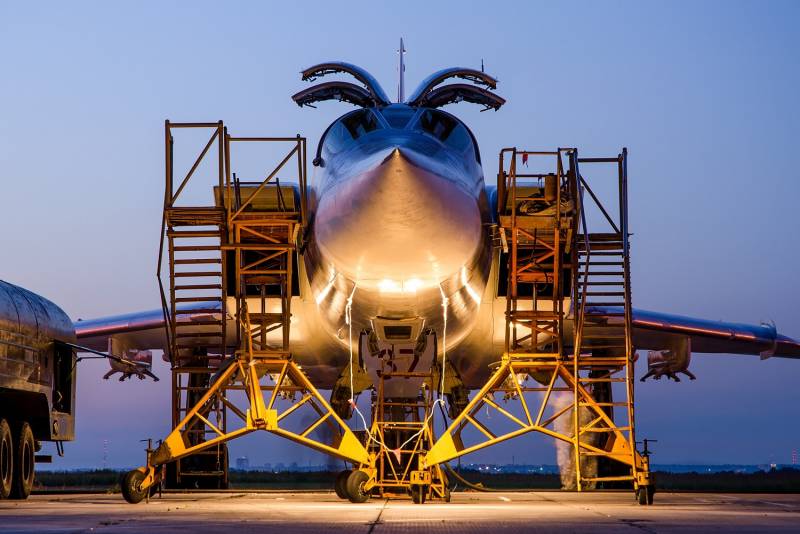
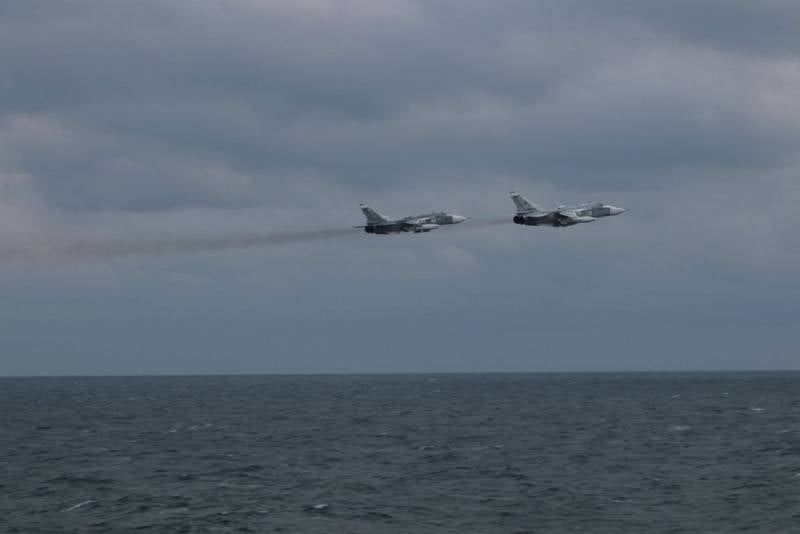
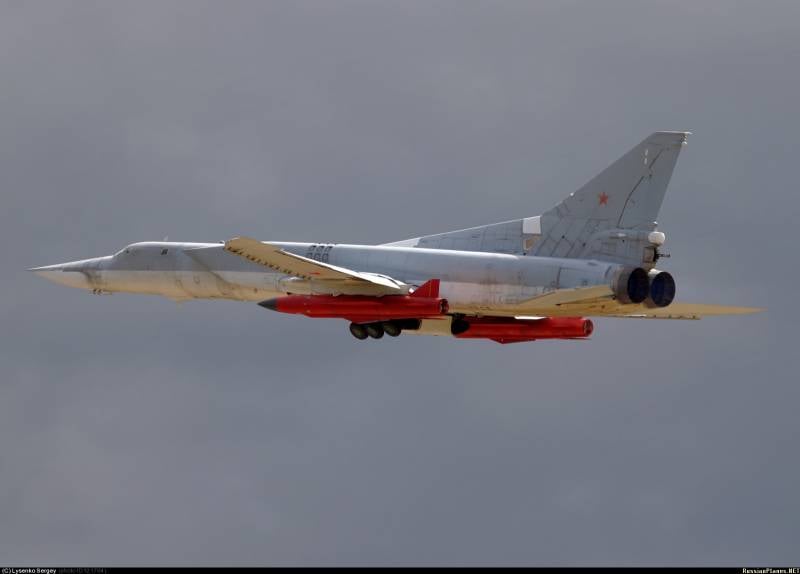
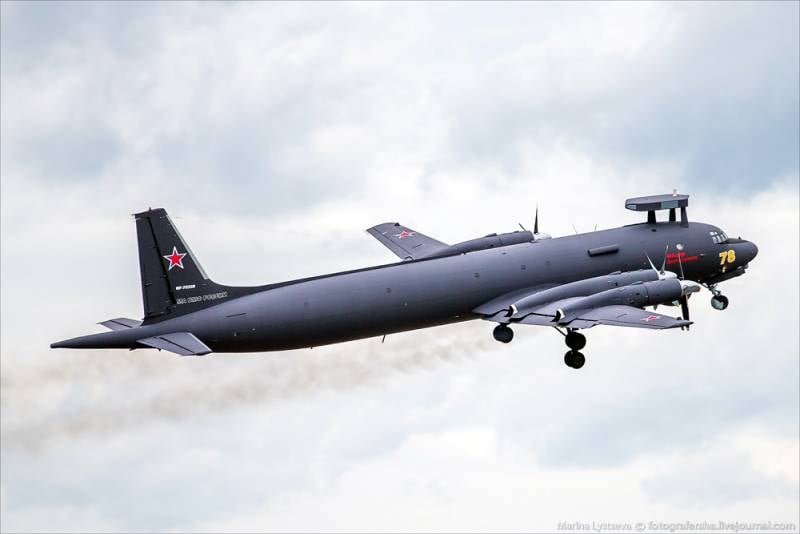
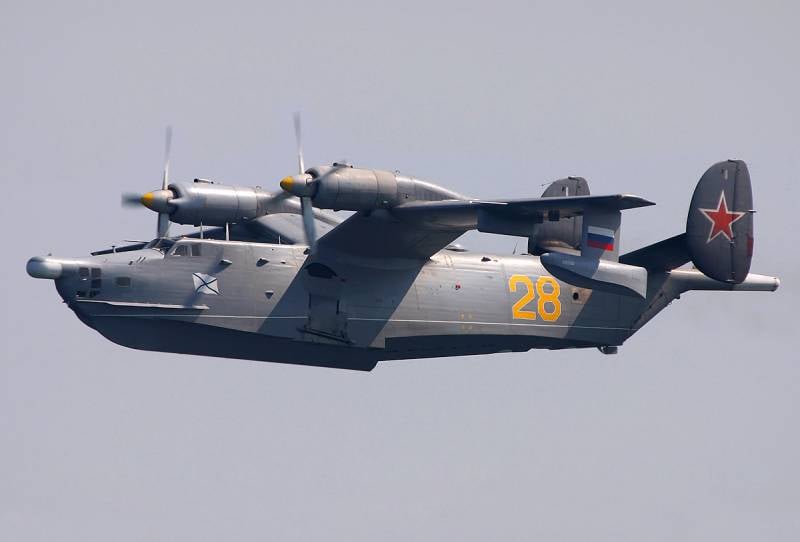
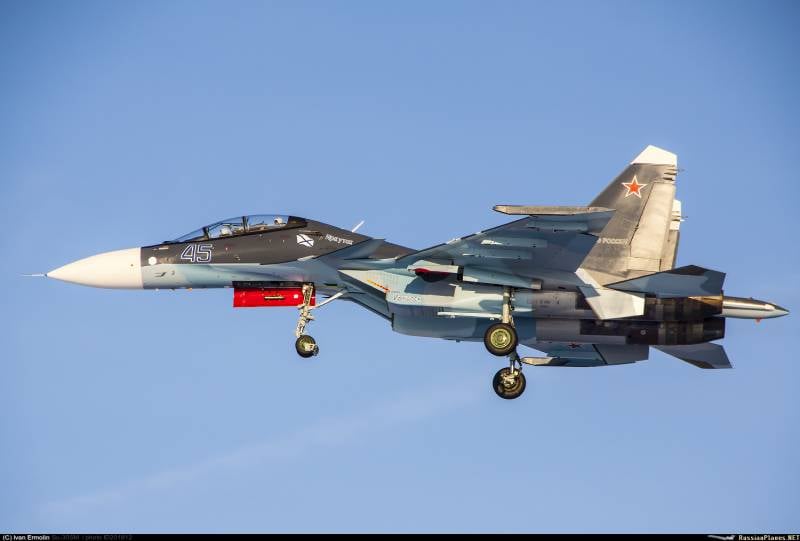
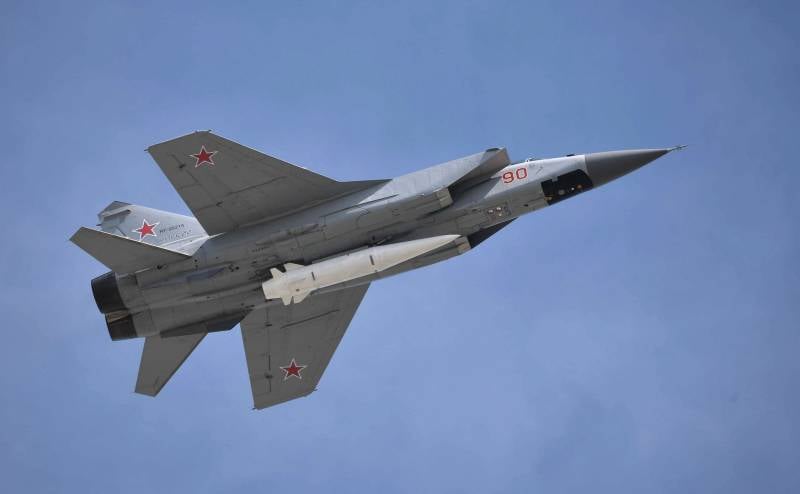
Information